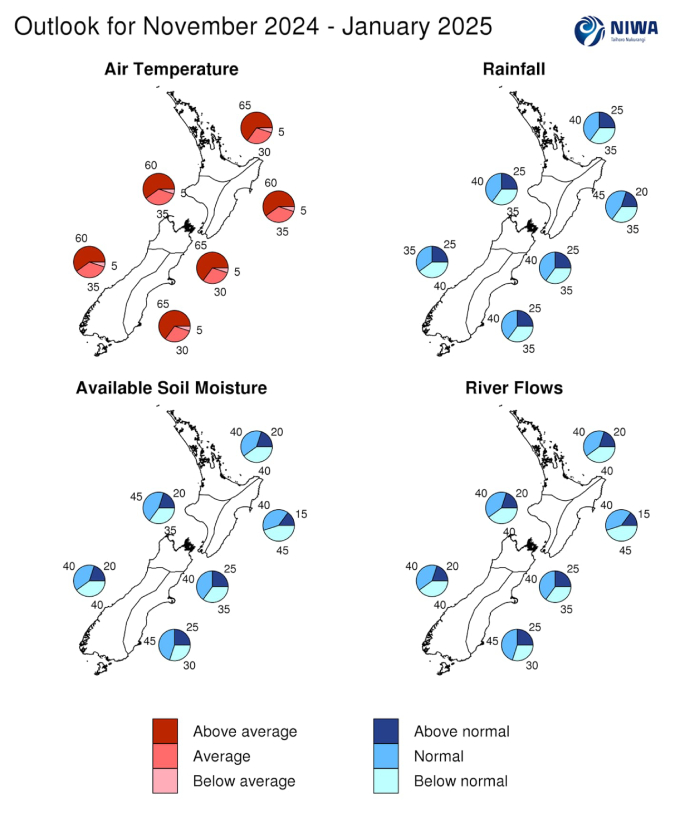There’s good news for Bay of Plenty holidaymakers this summer – but farmers may be less impressed.
Niwa has released its monthly climate outlook which shows the institute’s predictions for temperature, rainfall and soil moisture levels around the country – and it shows that the Bay of Plenty is “very likely” to see above-average temperatures and normal to below-normal rainfall.
Niwa principal forecasting scientist Chris Brandolino said November would be “especially warm”, with a couple of warmer periods during the month.
One period was around the 8th and 9th of the month, the other in the second half of November, Brandolino said. The past three days have had temperatures of 22.0C, 22.7C and 22.4C in Tauranga and 20.6C, 21.7C and 21.4C, according to Metservice.
“There’ll be multiple periods of unusual warmth,” Brandolino said. “With November being especially dry for a good chunk of the country ... a lack of rainfall is something we’ll have to be mindful of.
“That will be a theme. Summer-like temperatures when it’s not summer for the month of November. And that theme likely continuing.”
Despite that, an emerging La Nina meant there was also potential for some big rainfall events.
“We’re thinking there’s a better than half chance that La Nina officially emerges by the end of the calendar year.
“As we move through December, as we move through January, we’re going to have to watch the north for potentially big rainfall events.”

The climate outlook shows a 65% probability of above-average temperatures in the Bay and a 30% chance of near-average temperatures, leaving only a 5% chance they will be below average.
Rainfall predictions are at 40% for near average and 35% below average; soil moisture and river flows are at an equal probability (40% each) of being near or below average.
There is a 50% chance La Nina will develop by the end of the year, which in New Zealand typically means northeasterly winds become more common, there are moist and rainy conditions in the northeastern areas of the country, and there are warmer than average air and sea temperatures.
The report said while the prevalence of high pressure over New Zealand could lead to extended dry periods, La Nina-like conditions could bring infrequent short and sharp rain events from the north for the region.



0 comments
Leave a Comment
You must be logged in to make a comment.